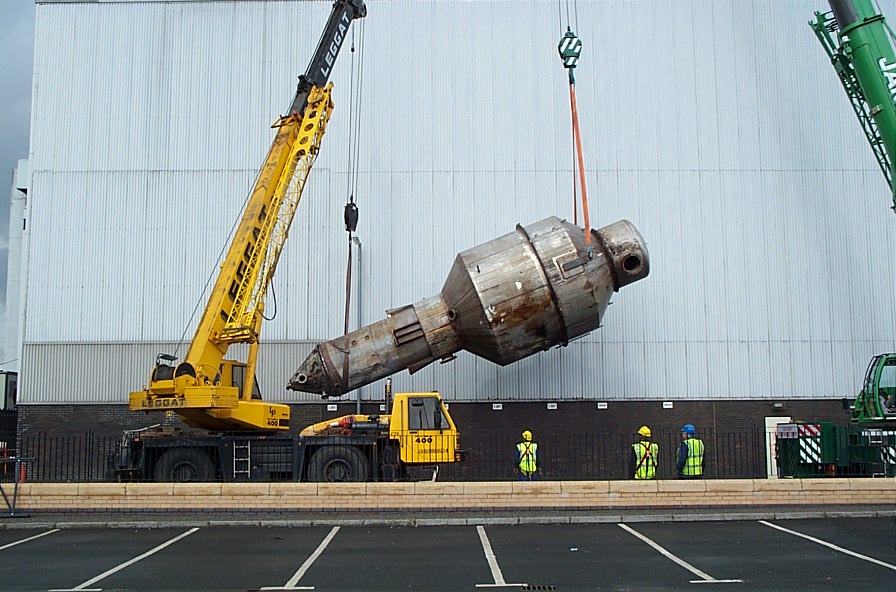Rising Film Evaporators
Engineering and Manufacturing Evaporators for Chemical Process Industries

Rising Film Evaporators
In a Swenson single-effect, LTV rising-film evaporator, evaporation occurs inside the evaporation tubes, so it is used primarily to concentrate non-salting liquors. To provide for good heat transfer, the temperature difference between the heating medium and the liquor should be greater than 15°F. Tubes are normally ¾” to 2″ in diameter and from 10 to 30 feet long. Liquor is fed into the bottom liquor chamber and enters the tubes.
There it is heated with condensing steam or any other suitable heat-transfer fluid. If the vapour pressure of the feed equals or exceeds the system pressure at the bottom tubesheet, vaporization will occur immediately. For colder feed, the lower portion of the tubes is used to preheat the liquor to its boiling point. Vaporization then begins at the height within the tubes where the vapour pressure of the feed liquor equals the system pressure.
As the liquor climbs up the inside of the tubes, additional vapour is generated and the velocity of the liquid-vapour mixture increases to a maximum at the tube exit. The outlet mixture impinges upon a deflector, mounted above the top tubesheet of the heat exchanger, where gross, initial separation of the liquid from the vapour occurs.
Additional entrained liquor is separated from the vapour by gravity as the vapour rises in the vapour body. A mesh or centrifugal entrainment separator can be installed near the top of the vapour body to remove most of the remaining traces of liquid from the vapor. The exit vapour is routed to either the next effect of a multiple-effect evaporator system, to a compressor or to a condenser. A Swenson vertical-tube surface condenser is shown in the Figure 1. The concentrated liquor is discharged from a connection near the bottom of the vapour body.
